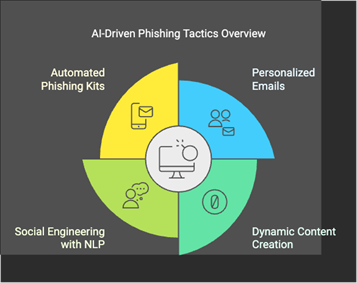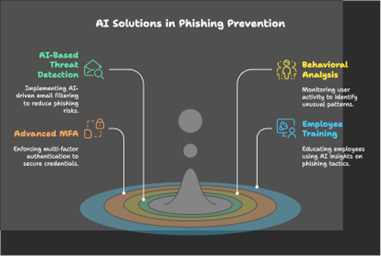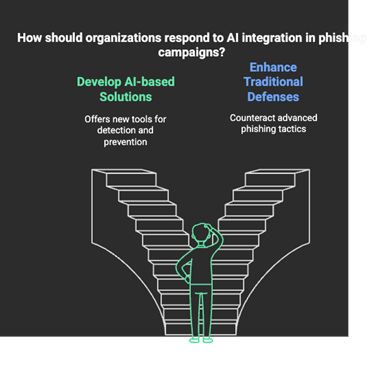AI is transforming phishing attacks, making them more sophisticated. This article explores how AI enhances phishing tactics and examines AI-driven strategies organizations can use to combat these evolving threats. Learn about detection, prevention, and ethical considerations.

Phishing attacks have significantly evolved by leveraging advancements in technology, especially artificial intelligence (AI). This article examines how AI transforms phishing tactics and explores strategies organizations can use to combat these sophisticated threats.
In recent years, AI has become a powerful tool in the arsenal of cyber attackers. Advanced phishing campaigns now use AI to craft highly personalized messages tailored to individual user behavior and preferences. For instance, AI can analyze a target’s email patterns, purchase history, or social media activity to create messages that appear legitimate.
Additionally, AI-driven tools can create realistic fake websites that are indistinguishable from genuine ones. This sophistication enhances the success rate of phishing campaigns, leaving organizations more vulnerable if they don’t have robust detection mechanisms in place.


The rise of AI-driven phishing attacks highlights the necessity for organizations to strengthen their cybersecurity measures. While AI can be a powerful defense tool, it also necessitates careful handling to avoid inadvertently enabling attacks.
While AI presents challenges and opportunities in combating phishing, organizations can effectively leverage AI-based solutions to detect and prevent these threats.

Recent studies indicate a significant rise in AI-driven phishing attacks. A 2022 report by Verizon Communications revealed that 46% of organizations faced phishing attacks involving sophisticated techniques like AI-generated content. These advanced attacks are more likely to target sectors with high-value data, including financial institutions and healthcare organizations.
As organizations use AI to combat phishing, addressing ethical and legal implications becomes crucial. Ensuring that AI-driven campaigns are conducted with consent and without causing harm is essential for maintaining user trust and compliance with regulations like GDPR and CCPA.
Organizations must balance the effectiveness of their AI tools with respect for user privacy and data security. This involves implementing strict guidelines for data usage and ensuring transparency in how AI-driven systems operate.
The integration of AI in phishing campaigns presents both challenges and opportunities for organizations. While advanced tactics can make traditional defenses less effective, developing AI-based solutions offers new tools for detection and prevention. Organizations must stay informed about both evolving tactics from attackers and the latest technologies available to combat them.

By adopting a proactive approach that includes AI-driven threat detection, robust employee training programs, and advanced authentication protocols, organizations can enhance their resilience against phishing attacks. As cybersecurity continues to evolve, staying ahead of sophisticated threats will require continuous innovation and a commitment to protecting sensitive information.
Share :

Assess. Measure. Fortify.
Keep Your Assets Safe With Our
Cutting-Edge Cybersecurity Solutions.
Developed by HACKTRONIAN